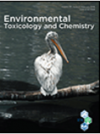Acute and Chronic Toxicity of Cobalt to Freshwater Organisms: Using a Species Sensitivity Distribution Approach to Establish International Water Quality Standards

Scientific abstract
Water quality standards for cobalt (Co) have not been developed for the European Union or United States. The objective of this research was to produce freshwater Co toxicity data that could be used by both the EU and US to develop appropriate regulatory standards (i.e., Environmental Quality Standards [EQS] or Predicted No Effect Concentration [PNEC] in Europe and Ambient Water Quality Criteria [AWQC] or State Water Quality Standards (WQS) in the US). Eleven species, including algae, an aquatic plant, and several invertebrate and fish species, were used in the performance of acute and chronic Co toxicity tests. Acute median‐lethal or median effective concentration (LC50 or EC50) values ranged from 90.1 µg Co/L for the duckweed (Lemna minor), to 157,000 µg Co/L for the midge (Chironomus tentans). Chronic 10% effect concentration (EC10) values ranged from 4.9 µg Co/L for the duckweed, to 2,170 µg Co/L for rainbow trout (Oncorhynchus mykiss). Chronic 20% effect concentration (EC20) values ranged from 11.1 µg Co/L for the water flea (Ceriodaphnia dubia), to 2,495 µg Co/L for O. mykiss. Results indicated that invertebrate and algae/plant species are more sensitive to chronic Co exposures than fish. Acute‐chronic ratios (derived as acute LC50s divided by chronic EC20s) were lowest for juvenile O. mykiss (0.6) and highest for the snail, Lymnaea stagnalis (2,670). Following the European‐based approach and using EC10 values, species sensitivity distributions (SSD) were developed and a median hazardous concentration for 5% of the organisms (HC5,50%) of 1.80 µg Co/L was derived. Chronic EC20 values were used, also in a SSD approach, to derive a US EPA‐style final chronic value (FCV) of 7.13 µg Co/L.
Full reference (link):
Stubblefield, W.A., Van Genderen, E., Cardwell, A.S., Heijerick, D.G., Janssen, C.R. and De Schamphelaere, K. (2020), Acute and Chronic Toxicity of Cobalt to Freshwater Organisms: Using a Species Sensitivity Distribution Approach to Establish International Water Quality Standards. Environ Toxicol Chem. Accepted Author Manuscript. doi:10.1002/etc.4662
